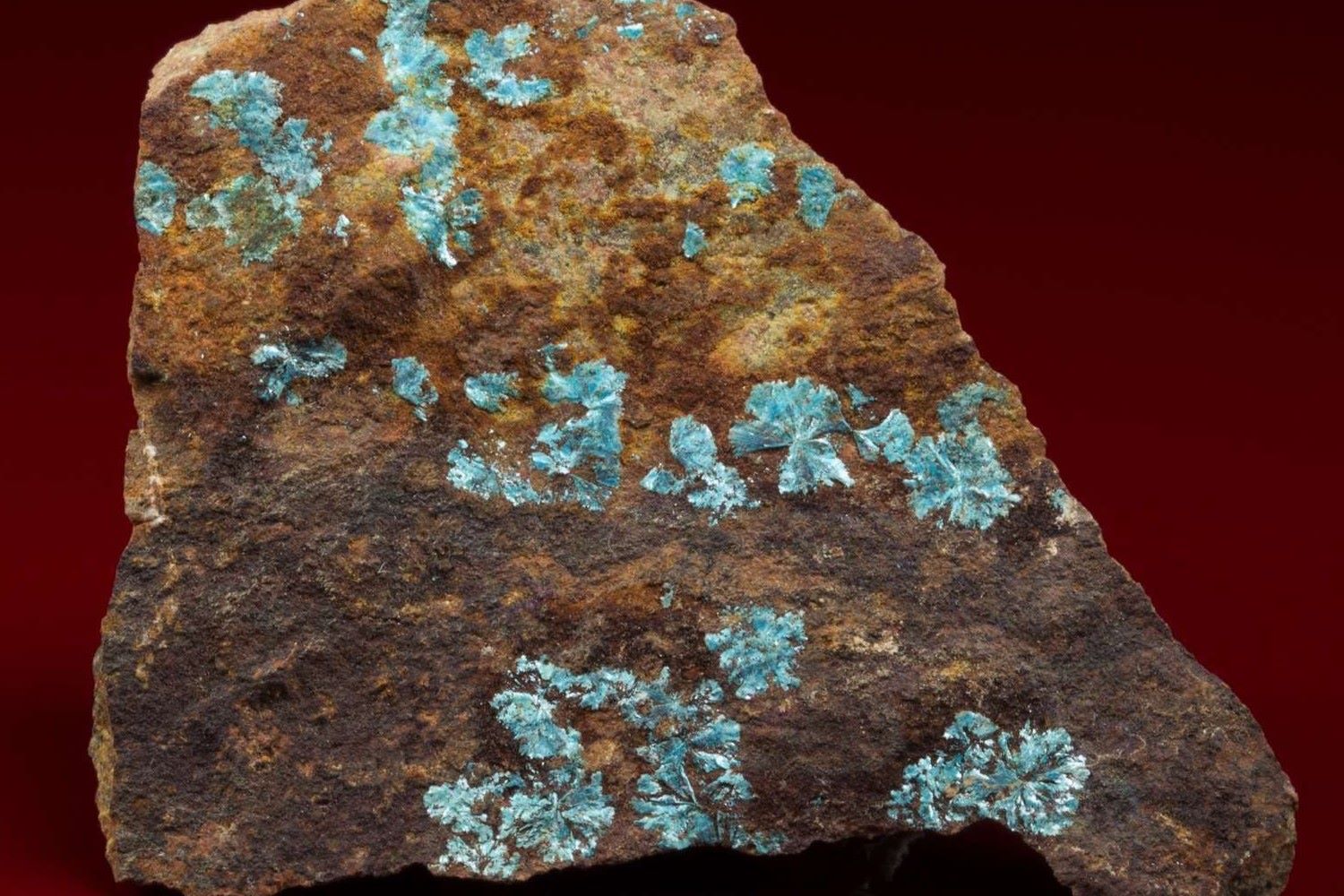
Sampleite is a fascinating mineral with unique properties and a rich history. Found in various locations around the world, this mineral has intrigued scientists and collectors alike. But what makes Sampleite so special? Sampleite is known for its striking blue-green color, which can vary depending on the specific conditions under which it formed. This mineral is often associated with copper deposits and can be found in both oxidized and reduced environments. Sampleite also has a unique crystal structure that sets it apart from other minerals. Its rarity and beauty make it a sought-after specimen for collectors. Ready to learn more about this captivating mineral? Let's dive into 30 intriguing facts about Sampleite!
Key Takeaways:
- Sampleite is a rare and beautiful mineral with unique blue to green hues. It's primarily collected for its rarity and is used in educational settings to teach about minerals and their formation.
- Sampleite's presence can provide insights into geochemical processes and potential phosphate deposits, which are crucial for agricultural fertilizers. Its discovery in multiple continents highlights the global nature of mineral formation.
What is Sampleite?
Sampleite is a fascinating mineral with unique properties and a rich history. Let's dive into some intriguing facts about this lesser-known gem.
- Sampleite is a rare phosphate mineral first discovered in Chile in 1942.
- It was named after Charles Sample, a prominent mineralogist who contributed significantly to the study of phosphates.
- Sampleite typically forms in oxidized zones of phosphate deposits.
- Its chemical formula is NaCaCu5(PO4)4Cl·5H2O, indicating it contains sodium, calcium, copper, phosphate, chlorine, and water.
- The mineral often appears in blue to green hues, making it visually striking.
- Sampleite crystals are usually tabular or prismatic in shape.
- It has a Mohs hardness of 3.5 to 4, meaning it is relatively soft.
- This mineral is often found in association with other copper minerals like atacamite and chrysocolla.
- Sampleite is primarily sourced from Chile, but it has also been found in the United States, Australia, and Namibia.
- It is often collected by mineral enthusiasts due to its unique color and rarity.
Physical Properties of Sampleite
Understanding the physical properties of Sampleite helps in identifying and appreciating this mineral.
- Sampleite has a vitreous to silky luster, giving it a shiny appearance.
- Its specific gravity ranges from 3.4 to 3.6, making it denser than many common minerals.
- The mineral exhibits perfect cleavage in one direction, meaning it splits easily along certain planes.
- Sampleite is brittle, which means it can break or crumble easily under stress.
- It is translucent, allowing light to pass through but not detailed images.
- Under ultraviolet light, Sampleite does not fluoresce, which can help distinguish it from other minerals.
Chemical Composition and Formation
The chemical makeup and formation process of Sampleite are equally fascinating.
- Sampleite forms in arid climates, where evaporation concentrates phosphate and copper minerals.
- It is a secondary mineral, meaning it forms from the alteration of primary minerals.
- The presence of chlorine in its structure is relatively rare among phosphate minerals.
- Sampleite's formation often involves the interaction of copper-rich solutions with phosphate-bearing rocks.
- The mineral can form pseudomorphs, where it replaces another mineral while retaining the original mineral's shape.
- Sampleite's hydration state (containing water molecules) is crucial for its stability and formation.
Uses and Significance
Though not widely known, Sampleite has its own significance and uses.
- Sampleite is primarily a collector's mineral, valued for its rarity and beauty.
- It is sometimes used in educational settings to teach about phosphate minerals and mineral formation.
- The mineral's unique properties make it a subject of scientific research, particularly in the study of phosphate deposits.
- Sampleite can provide insights into the geochemical processes that concentrate copper and phosphate in certain environments.
- Its presence can indicate potential phosphate deposits, which are important for agricultural fertilizers.
Interesting Tidbits
Here are some more captivating details about Sampleite that might surprise you.
- Sampleite has been found in fossilized bones, where it replaces the original bone material.
- The mineral can form beautiful crystal clusters, making it a favorite among mineral photographers.
- Sampleite's discovery in multiple continents highlights the global nature of mineral formation processes.
Final Thoughts on Sampleite
Sampleite, a fascinating mineral, offers a glimpse into Earth's geological wonders. Its unique properties and formation process make it a subject of interest for geologists and mineral enthusiasts alike. From its striking blue-green color to its rarity, Sampleite stands out in the mineral world. Understanding its composition and the environments where it forms can provide valuable insights into geological processes. Whether you're a seasoned collector or just curious about minerals, Sampleite is worth exploring. Its beauty and scientific significance make it a true gem in the world of geology. So next time you come across this rare mineral, you'll appreciate the intricate details and the story it tells about our planet's history. Keep an eye out for Sampleite, and let its unique characteristics inspire your curiosity about the natural world.
Frequently Asked Questions
Was this page helpful?
Our commitment to delivering trustworthy and engaging content is at the heart of what we do. Each fact on our site is contributed by real users like you, bringing a wealth of diverse insights and information. To ensure the highest standards of accuracy and reliability, our dedicated editors meticulously review each submission. This process guarantees that the facts we share are not only fascinating but also credible. Trust in our commitment to quality and authenticity as you explore and learn with us.
